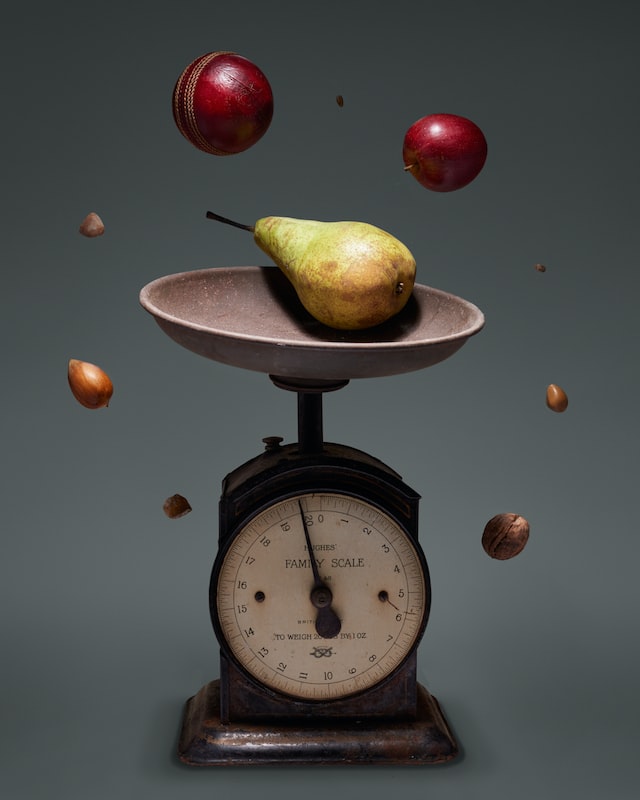Knowing how to balance your diet to maintain your sanity while not allowing your hunger to run wild is the key to feeling in control of your diet.

Find your way into a metabolic chamber if you ever need confirmation of how the human body functions. There are approximately 30 of them in the world, each costing millions of dollars. They employ cutting-edge technology to measure every ounce of energy consumed or burned.
These chambers enable scientists to gain a better understanding of diseases that affect the human body, such as obesity and metabolic problems. They also provide a decisive solution to a long-debated question: calories do matter. And they are the key determinants of whether you gain or lose weight. The question is less about whether a “calorie is a calorie” and more about why all calories are not created equal.
No plans to visit your local metabolic chamber? Don’t be concerned. We’ll help you understand how foods affect your metabolism and hunger, as well as how to make food work for you.
What Exactly Is A Calorie?
People frequently associate calories with food, although a calorie is merely a measure of energy. A calorie is defined as the amount of energy needed to raise the temperature of one gram of water by one degree Celsius.
What does the temperature of your water have to do with the number of calories in your food? Scientists calculate the number of calories in a food using a process we’re all familiar with in the kitchen: they burn it.
This is known as bomb calorimetry. To begin, place one ingredient in a sealed stainless steel container filled with water. After then, the food is heated until it burns. This chemical reaction produces a tremendous amount of heat, slowly heating the surrounding water. The number of calories in the food is then calculated by measuring how high the temperature of the water rises.

Modern Calculations
Although accurate, this method is gradually losing favor. Calories today are calculated differently. Instead of burning the meal, the overall number of calories is calculated by summing the calories delivered by each component of the food. This entails calculating the quantity of energy derived from protein, carbs, fat, and alcohol.
Because of the fact that calories in a gram of protein, carbs, fat, and alcohol are constant, this strategy works. The caloric values of each macronutrient are as follows:
- 1 gram of protein equals 4 calories
- 4 calories per gram of carbs
- 1 gram of fat is 9 calories
- One gram of alcohol equals seven calories
This is how you calculate the calories in your food. Yet that’s not the end of the narrative. As you’ll see, macronutrients are metabolized differently, which is why not all calories are created equal. There are some foods (like protein) that burn more calories during digestion, whereas others (like fiber in carbohydrates) influence hunger and appetite.
Knowing how to balance your diet to maintain your sanity while not allowing your hunger to run wild is the key to feeling in control of your diet.
Why Aren’t Calories All the Same? (And What It Means for Your Meals)
The misconception about calories stems from how many grams are in a given food after it’s cooked or packaged, rather than how your body uses those calories after you eat and digest food.
The human body is the most amazing machine ever created. Everyday functions such as breathing, walking, and thinking require a specific quantity of calories. And, because your very survival is dependent on calories, your body processes foods in a variety of ways to meet all of your demands.
To understand how you acquire and lose weight, consider energy balance, also known as the traditional calories in vs. calories out debate. Although numerous factors might influence energy balance, the type of calories you consume has a significant impact. That is why not all calories are created equal.

Metabolic Rate
Many factors influence your daily metabolic rate. The three main components are as follows:
- Basal metabolic rate (BMR): The amount of energy your body needs to function.
- Thermic effect of food (TEF): The amount of energy expended when eating.
- Exercise and activity: These are the calories you burn while moving and exercising. This can be divided into two categories: NEAT (things like moving about and fidgeting) and standard workouts.
Most people are unaware that their basal metabolic rate accounts for 65 to 80 percent of the calories they burn each day. The rest of your metabolism is made up of physical activity and the meals you eat, but that doesn’t imply they’re unimportant.
Protein, carbohydrates, and fat are all digested in distinct ways. Consuming 100 calories of protein differs from eating 100 calories of carbohydrates because protein has a greater thermic effect on the body.
When you eat protein, you can burn up to 30% of your calories. In the preceding example, if you consumed 100 calories of protein, your body would receive around 70 calories since 30 calories would be consumed as a result of protein’s high TEF.
In other words, the higher the TEF, the more the “calories out” portion of the calories in minus calories out equation will be influenced (because a percentage of those calories will not end up in your body and stored). Carbohydrates typically have a TEF of 5 to 10%, while fat typically has a TEF of 3 to 5%.
This is one of the reasons why high-protein diets are connected with weight loss and maintenance. Yet that’s only half the tale.
Consuming Extra Protein Has Impact
Protein also has a cascading effect on hunger, making it an excellent foundation for muscle gain and weight loss.

When you eat protein, you boost your satiety. This means that a protein-rich meal makes you feel fuller and crave less food (i.e. eating fewer calories).
It’s why high-calorie (or “empty calorie”) foods like junk food or ice cream can leave you feeling hungry just a few hours later. These foods aren’t only high in calories. They don’t satisfy your body’s needs for hunger regulation, so you crave more food even when you’re eating a lot. These meals are good to have on occasion, but they make it difficult to stay full.
A high-protein meal can increase the production of a hormone (ghrelin), which helps to quiet your hunger and influences how quickly your hunger returns after eating.
Protein and Caloric Deficits
When all of the advantages are considered, it’s easy to see why deriving more calories from dietary protein helps produce a caloric deficit. Protein burns more calories (greater TEF) and lessens the “calorie in” component of the equation by influencing how much you eat later in the day.
Furthermore, providing your body with the protein it requires to recuperate from strength training will help you gain muscle mass.
Protein isn’t the sole macronutrient that aids in hunger regulation. Carbohydrate fiber is also quite good at enhancing satiety without adding too many calories. Because most fibrous foods have a low energy density, you can eat a lot without consuming too many calories.
Learning to consume foods that keep you full is a simple method to increase your flexibility. The purpose of any diet is to allow more freedom rather than to restrict it.
You’re more likely to stay full and avoid overeating if you make at least half of your plate from proteins and fiber.
That way, you’ll still be able to eat less healthy items. For example, 100 calories from chicken are not the same as 100 calories derived from a candy bar. They are vastly different, even though we’re still talking about 100 calories. If the candy bar does not lead to you eating 10 more candy bars, it doesn’t matter. Fretting over those 100 calories is a waste of time and stress that your mind and body do not require.
A Final Thought from DigEnet
This is why, in general, healthy diets might include 80 to 90 percent more nutritious foods. Think veggies, fruits, nuts, seeds, higher fiber carbs, and protein. Limit the percentage to between 10 to 20% foods with fewer immediate health advantages. That is the kind of balance that will produce results while avoiding burnout.
